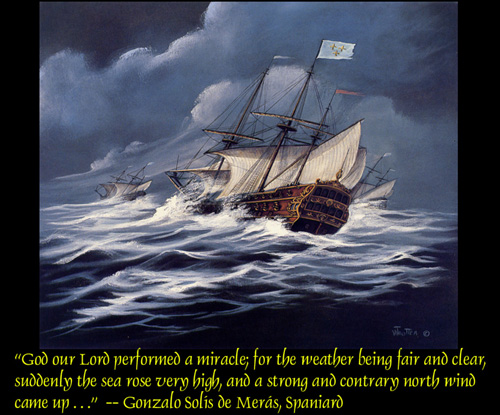
A great story recently appeared in Jacksonville Magazine thanks to writer Alison Trinidad, who interviewed LAMP staff and our colleague at the Center for Historical Archaeology Dr. John De Bry. The article focuses on the 1565 loss of Ribault’s French fleet, which had made the initial attempt to colonize the First Coast. The destruction of Ribault’s ships by hurricane paved the way for Pedro Menendez’ successful and permanent settlement at St. Augustine. These shipwrecks thus played a pivotal role in American history, and as we approach the 450th anniversary of their loss, their discovery would be the holy grail of maritime archaeology in Northeast Florida:
“This is an event that changed the course of history,” says John de Bry, an Indialantic-based historian and archaeologist working on the search. If the Spanish had not successfully colonized, we might be living in a different Florida.”
“Its a timely topic,” adds Chuck Meide, director of the Lighthouse’s research arm, known as LAMP. “We know that the fleet was scattered south of St. Augustine to as far as Cape Canaveral. That’s a huge area to cover. It would take years and years to search, but it would be nice to by 2015.”
LAMP, or Lighthouse Archaeological Maritime Program, routinely conducts shipwreck surveys near and around the nation’s oldest port, but the search for Ribault’s sunken fleet would take them into uncharted waters. “All our work here has been done and focused in St. Augustine,” Meide says. “We’re used to day trips. Logistically, its quite different for us.”

To prepare for longer spans at sea on a live-aboard vessel, Meide is heading a couple of surveys in the Mayport and Matanzas Inlet areas in July. They don’t expect to find Ribault’s ships on these research trips, but wrecks dating to the 1800s are possible, Meide says. A crew of four or five will live for weeks at a time on Roper, a 36-foot steel-hulled trawler on loan from the Institute of Maritime History in Maryland. Using sonar and metal detecting equipment, the crew will scan the seafloor for artifacts that can be unearthed, preserved and studied. It’ll be a leap forward for the team, which spent most of 2010 excavating a Revolutionary War-era wreck discovered in late 2009. “One season of diving can mean ten years of work in the lab,” Meide says. “There’s plenty of work to keep us busy.”

